The Making of Theatre: There are no secrets
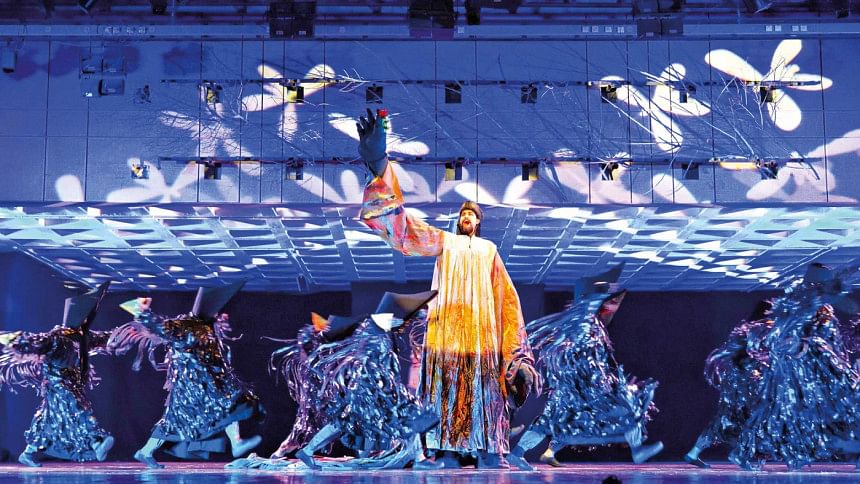
What makes theatre good, bad or even deadly? I thought I knew the answer to this tricky question. I had a valid ground for this belief because more than thirty years ago, the pre-eminent playwright of Bangladesh, Selim Al Deen, had made his point by composing Chākā, premiered by this author in the US in 1990, that to write a play you do not need dialogues. All that you need is a narrative (a story, or fabula) to generate interest by what one or more live actors do in the presence of one of more live spectators. Hence, generic distinction made in literature is immaterial in making theatre. Of course, post dramatic practitioners will contest the matter of the narrative by insisting that it too is immaterial, but we could take this up at another time and on another platform.
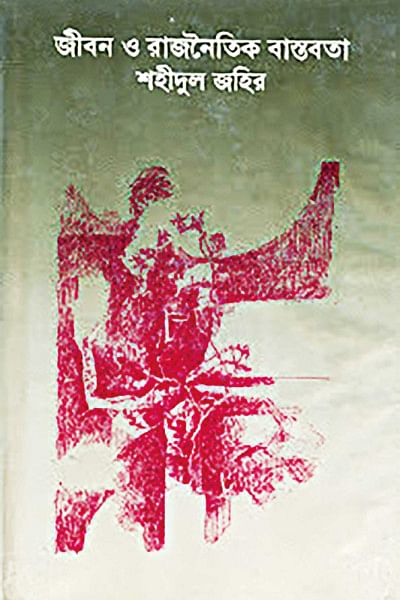
My belief regarding what makes theatre came to naught immediately after I launched a performance of Shahidul Jahir's novella Jīban O Rājnoitik Bāstabatā in 2018. A venerable professor of English literature immediately dismissed the performance as a reading of Jahir's novel. Similar 'apprehension' was shared by a scholar in a journal published from Rajshahi University, and most recently, by a Gram Theatre activist from Pabna district. I dismissed the first two observations as literary bias. But the third observation, made by an activist of a theatre organization which was founded by none other than Selim Al Deen and which has reached grassroots level, was shocking, to say the least. The edited text of Jīban O Rājnoitik Bāstabatā that we adopted for the performance was not a conventional play arranged in a series of scenes or acts with lines assigned against names of characters, set off with colons. Our intent was to retain Jahir's unique language imbued with the power of evoking haunting memories of the war. Hence, our text was a narrative set out very much like the novella, but all the lines were rendered in the present tense instead of the past. Some of the lines were rendered as dialogues while others were narrated in the third person but with the actor preforming the action in the first person. Such a strategy is not unheard of, for numerous performances based on the Padmā Purāṇ performed in the indigenous theatre circuit of Bangladesh are based on a similar practice: no lines of the Padmā Purāṇ are set out as dialogues; rather, entire narratives are composed in rhymed metrical verse. Selim Al Deen, the most innovative playwright of Bangladesh, followed this strategy to compose his plays since Chākā (1991), except that he wrote in prose. Even in Europe such strategies are quite well known as in the case of Sarah Kane's 4.48: Psychosis. Hence, when The Daily Star's In Focus section solicited a piece I thought it timely to bring up the issue of what makes theatre good, bad or even deadly. I present my intellectual musings not with the false assumption of settling the issue once and for all, but simply to unsettle the colonised mind by raising a debate. In the process, I will draw on my research to substantiate my argument.
I begin by invoking Aristotle, for at the heart of the problem is his explication of what makes theatre, more precisely, drama. And as I argue later, central to the confusion regarding what makes theatre is how Aristotelean 'drama' is elided by/with 'theatre'. In his Poetics (c. 335 BCE), the earliest extant philosophical discourse on literary theory, Aristotle distinguishes three genres in the art of poetry, namely the epic, the dithyrambic (lyric poetry performed in song and dance) and the dramatic (including tragedy, comedy and satyr play). Common to all three is the function of mimesis (translated as imitation, likeness and representation) of life. Importantly, "an imitation need not be a straightforward copy of the object imitated [...] nor need an imitation be a likeness of an object which actually exists."(2) Poetry, an "imitation in rhythmic language,"(3) is not concerned with what has actually happened, but with what would happen in accordance with probability or necessity. Drama, also a genre of poetry, was held by Aristotle to be distinct from the epic by the mode of poetic imitation: whereas the epic was done "by narrating (either using a different persona, as in Homer's poetry, or as the same person without variation)," the drama was done "with all the imitators as agents and engaged in activity."(4) As Aristotle explains further, it is said that drama is so called because it represents "men [sic.] doing things."(5) Derived from the verb drān ('to do'), the term 'drama' literally means "a thing done".(6) Hence, although Greek plays presented 'a thing done', not everything presented was set in dialogue: dialogic episodes interspersed with choral songs (that described and commented upon the action of the play), and these were rendered during performance with dance. This aspect went missing from the French Neo-classic drama down to the modern European and American drama.
Over two millennia after the Poetics, Georg Wilhelm Friedrich Hegel delivered a series of lectures in Heidelberg (1818) and Berlin (1820-21), a compilation of which now constitutes a cornerstone of European aesthetics. In these lectures, Hegel asserts that "because [European] drama has been developed into the most perfect totality of content and form, it must be regarded as the highest stage of poetry and of art generally."(7) More importantly for our purpose, he follows Aristotle in asserting that "what drama in general needs to be is the presentation, to our minds and imagination, of actual human actions and affairs and therefore of persons expressing their action in words." (8) Furthermore, he proposes the principle of dramatic conflict as sine qua non for drama to be. In his words, "it [drama] rests entirely on collision of circumstances, passions, and characters, and leads therefore to actions and then to the reactions which in turn necessitate a resolution of the conflict and discord."(9) Since Hegel, till around the 1960s, there has been a procession of European and American scholars intricately expounding and proliferating a similar notion of 'drama', as evinced by Gustav Freytag (Technique of Drama: An Exposition of Dramatic Composition and Art, 1863), Ferdinand Brunetiere (The Law of the Drama, 1914), Allardyce Nicoll (An Introduction to Dramatic Theory, 1923), John Howard Lawson (The Theory and Technique of Playwriting, 1936), and more. (10)
The 'wisdom' of Europe was embraced unhesitatingly as the most civilized by the colonized Bengali intellectuals of the 19th century. In the mid-20th century, Sadhan Kumar Bhattacharya summed up the wisdom by compiling and explicating the European tradition of drama in his Nāṭṭatattwa Mimāngsā (1963). He rightly pointed out that the nearest equivalent of the English term 'drama' in Bangla is nāṭak. (11) He follows Aristotle to explicate nāṭak as "imitation of action ... in the form of action," where "form of action implies" characters "as living and moving before us"; it is distinct from a narrative poem (ākhyān kābya) as "imitation of action ... in the form of narration".(12) He goes on to discuss a host of European and American scholars to arrive at the conclusion that the 'dramatic', i.e., life or essence of the drama is the manifest veracity of action and reaction. (13) It is typically by such a criterion that venerable lecturers and professors of literature in Bangladesh today, serving as gatekeepers of wisdom, deliver their verdict as to what makes and what does not make drama performed as theatre. This unwavering belief is grounded on Bhattacharya's dictum that it is not the spectators but only the critic-aesthete well-versed in theory who can be the ultimate judge. (14) However, as T. S. Eliot himself acknowledges,

the forms of drama are so various that few critics are able to hold more than one or two in mind in pronouncing judgment of 'dramatic' and 'undramatic'. What is 'dramatic'? If one were saturated in the Japanese Noh, in Bhasa and Kalidasa, in Æschylus, Sophocles and Euripides, Aristophanes and Menander, in the popular mediaeval plays of Europe, in Lope de Vega and Calderon, as well as the great English and French drama, and if one were (which is impossible) equally sensitive to them all, would one not hesitate to decide that one form is more dramatic than another? (15)
Sadhan Kumar Bhattacharya quotes this excerpt from Eliot, and yet he, as well as his contemporary imitators, unhesitatingly deliver their sumptuous judgement as to what makes drama performed as theatre.
Arguing against Bhattacharya and Co., one can go back to the Nāṭyashāṭstra (2nd century BCE - 2nd century CE), the principal South Asian treatise on theatre and dance ascribed to Sage Bharata. It sets the parameter of theatre (nāṭya) thus: it "is the representation (anukaraṇa) of the ways of the world involving [...] various emotions and differing circumstances. [...] There is no art, no knowledge, no yoga, no action that is not found in nāṭya." (16) Furthermore, nāṭya is said to have been created by Brahma at the supplication of the gods for a krīḍānīyak (playable) that is simultaneously pleasing both to eyes and ears. (17) The principle of conflict is non-essential in this formulation of what makes theatre. Instead, as the Nāṭyashāṭstra advises, the structure of action (kārya) of a play needs to pass through a maximum of five stages: (i) beginning (ārambha), effort (yatna), possibility of attainment (prāptisambhaba), suppression of attainment (niyatāpti) and fruition (phalāgama). In this scheme, the Nāṭyashāṭstra conceives the image of a seed (bīja) growing into a tree to bear fruit as the structure of an action, not only of a play in particular but of all complex events of life in general. (18) Importantly, the five-stage structure of action is applicable in only two of the ten forms (rūpakas) of plays explicated in the Nāṭyashāṭstra, one of which is called nāṭaka (a term borrowed to denote 'drama' since the colonial times).
At this juncture, it is important not to be trapped by another colonial convention borrowed by Hindutva to assert that the Sanskrit theatre and the Nāṭyashāṭstra are exclusively Indian (Hindu) heritage, and hence, Bangladesh is excluded from its ambit. It would be unwise to impose the map of British India on the contemporary state of India as well as ancient South Asia, and elide the distinction of all three. Despite the claims made by Hindutva, the Sanskrit theatre and the Nāṭyashāṭstra are very much a part of Bangladesh theatre tradition.(19) The earliest textual evidence of theatre in ancient Bangladesh is a Buddhist play named Lokānanda [Joy for the World], written in Sanskrit sometime between the 5th and 6th centuries CE by a Buddhist scholar named Candragomin from southern Bangladesh.(20) Lokānanda is a nāṭaka, and was extremely popular even during the time of the Chinese pilgrim Yijing's [I-Tsing's] visit to South Asia in the 7th century CE.(21) This tradition of Sanskrit theatre emulating the Nāṭyaśāstra flourished in the early-medieval period in Bangladesh, and waned in the late-medieval period after Muslim invasions in the early 13th century. The tradition nevertheless continued till Michael Madhusudan Dutt (1824-1873), who inaugurated modern dramaturgy in Bengali theatre by introducing European techniques, took it on himself "to throw off the fetters forged for us by the servile admiration of everything Sanskrit."(22)
Besides the rūpakas, South Asian aestheticians such as Śāradātanaya, Sāgaranandī, Abhinavagupta, also recognise the uparūpaka ('secondary forms' of plays), which, as I have argued elsewhere(23), are the link between the ancient Sanskrit theatre and the indigenous theatre tradition seen today in Bangladesh. These 'secondary forms' characteristically deploy music and dance abundantly. (24) The uparūpaka in which song and dance predominate were named nṛttātmaka-prabandhas (prevalent today as Manipuri Rās Nrtya and Mukho Nācha), those in which songs with bodily movement predominate, as geya-rūpakas (prevalent today as Rayānī Gān and Mādār Pīrer Gān), and those in which reading-recitation predominates were known as pāṭhya-rūpakas (Puthi Pāṭh and Sukha Kītran).(25) The performance mechanics of the ancient theatre of South Asia and the indigenous theatre of Bangladesh is so deceivably simple that it can be summed up in the famous opening lines of The Empty Space by Peter Brook:
I can take any empty space and call it a bare stage. A man [or a woman] walks across this empty space whilst someone else is watching him [or her], and this is all that is needed for an act of theatre to be engaged. (26)
Having thus untangled the knots in the colonial mind around the notions of 'drama', 'theatre' and 'nāṭaka', I can now sum up what makes theatre. The core of theatre is the actor, and hence the core question is, what is acting? To 'act' is to 'do', and by implication, do as a character, and as Stanislavski would add, perform an action by engaging in communion, and with belief and truth. Founding my conceptualising thus, I superimpose on it the notion of acting as explicated in the Nāyṭaśāstra: "the root nī with the preposition abhi which means towards, gives the word abhinaya because it carries (nī) the performance towards (the audience)(27). The actor can narrate, walk, dance, participate in dialogue or sing, and do whatever, so long as s/he is carrying' the performance to the spectators. A theatre performance is successful because the live actors it deploys succeed in carrying the meaning of the text (that weaves a narrative as a playful representation of life in a fictional universe), to spectators attending the performance in-person, in an actual time-space.
Summing up, then, central to the confusion regarding what makes theatre is how Aristotelean 'drama' is elided by/with 'theatre'. One could deploy drama in making theatre; however, drama is not the be all and end all of making theatre. But then, going by Aristotle and the foundation of European dramaturgy, because common to the epic, the dithyrambic/lyric and the dramatic is the function of mimesis of life, and because the difference in the three is held to be in narrating and in doing, why should it not be drama, Hegel's highest stage of poetry and of art generally, if all the imitators as agents were engaged in doing things as they narrated, sang, danced, and/or dialogued, so long as, again according to Hegel, there is a presentation of actual human actions and affairs? In this proposition, I would only add that the principle of dramatic conflict is immaterial; what matters is that the krīḍānīyak (playable) or the 'play' as in English, conceived as a playful representation of life and living and devised possibly by the deceivably simple performance mechanics of the uparūpaka tradition and the indigenous theatre tradition of Bangladesh, holds the spectator's unfailing interest and attention. Because Bangladesh emerged in the aftermath of double colonization, first under Britain, immediately followed by internal colonization under Pakistan, it is now high time that we, borrowing from the discourse of Ngũgĩ wa Thiong'o, decolonized our mind, if only because "the biggest weapon wielded and actually daily unleashed by imperialism against [the] collective defiance [of the struggling people of the earth] is the cultural bomb."(28)
1. The sub-title, "There Are No Secrets", is taken from a book by the same title by Peter Brook.
2. Malcolm Heath, Introduction, Poetics by Aristotle (London: Penguin Books, 1996), p. xiv.
3. Heath, Poetics, p. xv.
4. Aristotle, Poetics, tr. Malcolm Heath (London: Penguin Books, 1996), p. 5.
5. Aristotle, On the Art of Poetry, tr. T. S. Dorsch (Harmondsworth: Penguin, 1965), p. 34.
6. T. S. Dorsch, On the Art of Poetry by Aristotle (Harmondsworth: Penguin, 1965), p. 34, fn. 1.
7. G. W. F. Hegel, Aesthetics: Lectures on Fine Art, Vol. II, tr. T. M. Knox (Oxford: Clarendon Press, 1975), p. 1158.
8. Hegel, Aesthetics, p, 1159.
9. Hegel, Aesthetics, p. 1159.
1o. For an extensive if not exhaustive list of European and American scholars who have explicated the notion of drama, see Sadhan Kumar Bhattacharya, Natyatattwa Mimangsa (Kolkata: Karuna Prakashani, 1963), pp. 61-135.
11. Bhattacharya, Natyatattwa Mimangsa, p. 177.
12. Bhattacharya, Natyatattwa Mimangsa, p. 148.
13. Bhattacharya, Natyatattwa Mimangsa, pp. 151 and 173.
14. Bhattacharya, Natyatattwa Mimangsa, pp. 177.
15. T. S. Eliot, Selected Essays (London: Faber and Faber, p. 75.
16. Bharata Muni, The Nāṭyashāṭstra, tr. with critical notes by Adya Rangacharya (New Delhi: Munishiram Manoharlal Publishers Pvt. Ltd., 1996), p. 4.
17. Bharata, Nāṭyashāṭstra, ed. Sureshchandra Bandapadhyay, tr. Sureshchandra Bandapadhyay and Chanda Chakravarti (Kolkata: Nabapatra Prakashan, 1980)), p. 2; The Nāṭyashāṭstra, tr. Adya Rangacharya, p. 1.
18. M. Christopher Byrski, Concepts of Ancient India Theatre (New Delhi: Munshiram Manoharlal Publishers Pvt. Ltd. 1974), pp. 103-114, 118-119.
19. For further discussion on the matter, see Syed Jamil Ahmed, "Theatre traditions in Bangladesh," in Oxford Research Encyclopedia of Asian History. Oxford University Press, 2021, retrievable at https://doi.org/10.1093/acrefore/9780190277727.013.649
20. Dineschandra Sircar, Studies in the Religious Life of Ancient and Medieval India (Delhi: Motilal Banarsidass, 1971), p. 99. Candragomin, Joy for the World [Lokānanda], tr. Michael Hahn (Berkeley CA: Dharma Publishing, 1987).
21. I-Tsing, A Record of the Buddhist Religion as Practised in India and the Malay Archipelago (A.D. 671-695), tr. J. Takakusu (Oxford: Clarendon Press, 1896), p. 164.
22. Michael Madhusudan Dutt, Letter Fifteen (pp. 178-180), in Yogindanath Basu (ed.), Maichel Madhusudan Dutter Jiban-charit [Michael Madhusudan Dutt's Biography, including unpublished poems, letters and criticism of his works] (Calcutta: Ashok Pustakalay, 1894), p. 179.
23. Ahmed, "Theatre traditions in Bangladesh."
24. G. H. Tarlekar, Studies in the Nāyṭaśāstra (Delhi: Motilal Banarsidass, 1975), p. 40-43. Saccidananda Mukhopadhyay, Bhāratiya Nāṭyaveda O Bańglā Nāṭaka (Calcutta: Sahitya Niketan, 1974), 171-83.
25. Tarlekar, Studies, pp. 40-43.
26. Peter Brook, The Empty Space (Harmondsworth: Penguin, 1968), p. 11.
27. Adya Rangacharya, The Nātyaśāstra: English Translation with Critical Notes (New Delhi: Munshiram Manoharlal, 1986), 78.
28. Ngũgĩ wa Thiong'o, Decolonising the Mind (Harare: Zimbabwe Publishing House, 1981), p. 3.
Syed Jamil Ahmed is a theatre director and independent scholar.

 For all latest news, follow The Daily Star's Google News channel.
For all latest news, follow The Daily Star's Google News channel. 

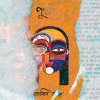

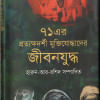
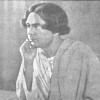
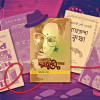


Comments